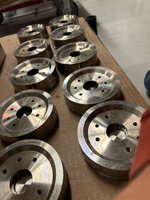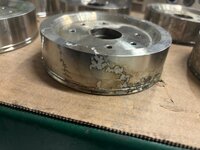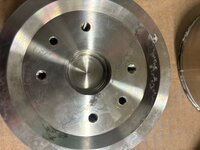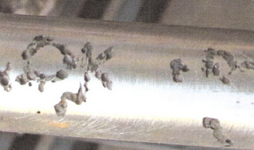OSU Engineer
Mechanical
- Jan 12, 2024
- 3
Long story short, we ran several dozen parts from 316SS and sent them off for DLC plating. The plater sent a handful of them back saying they were damaged. Upon inspection, the parts were covered in what appears to be a salt or calcium type powder and after cleaning it off there is pitting into the material - see attached pictures. Also, the parts that have this pitting all have a gold tint to them, whereas the other parts have the normal silver stainless appearance. The pitting seems to have spread in an organic fashion and not from spray or spillage.
We cannot figure out how this happened so that we can prevent it in the future. Has anyone experienced anything like this? Is it possible the plater pre-cleaned them with chlorides or something, and if so why did it only affect a handful of them and why do those parts also have a gold hue.
We cannot figure out how this happened so that we can prevent it in the future. Has anyone experienced anything like this? Is it possible the plater pre-cleaned them with chlorides or something, and if so why did it only affect a handful of them and why do those parts also have a gold hue.




